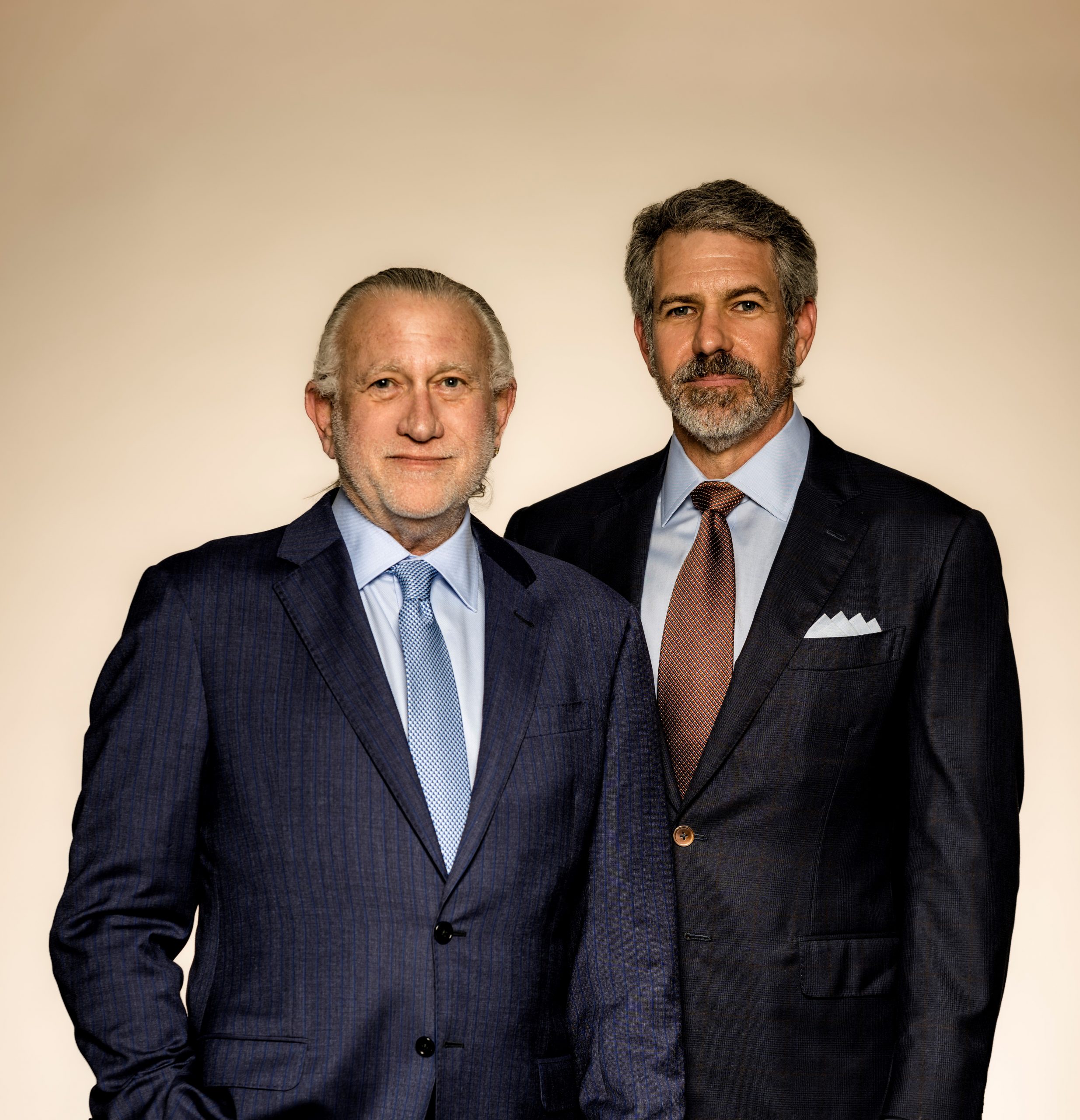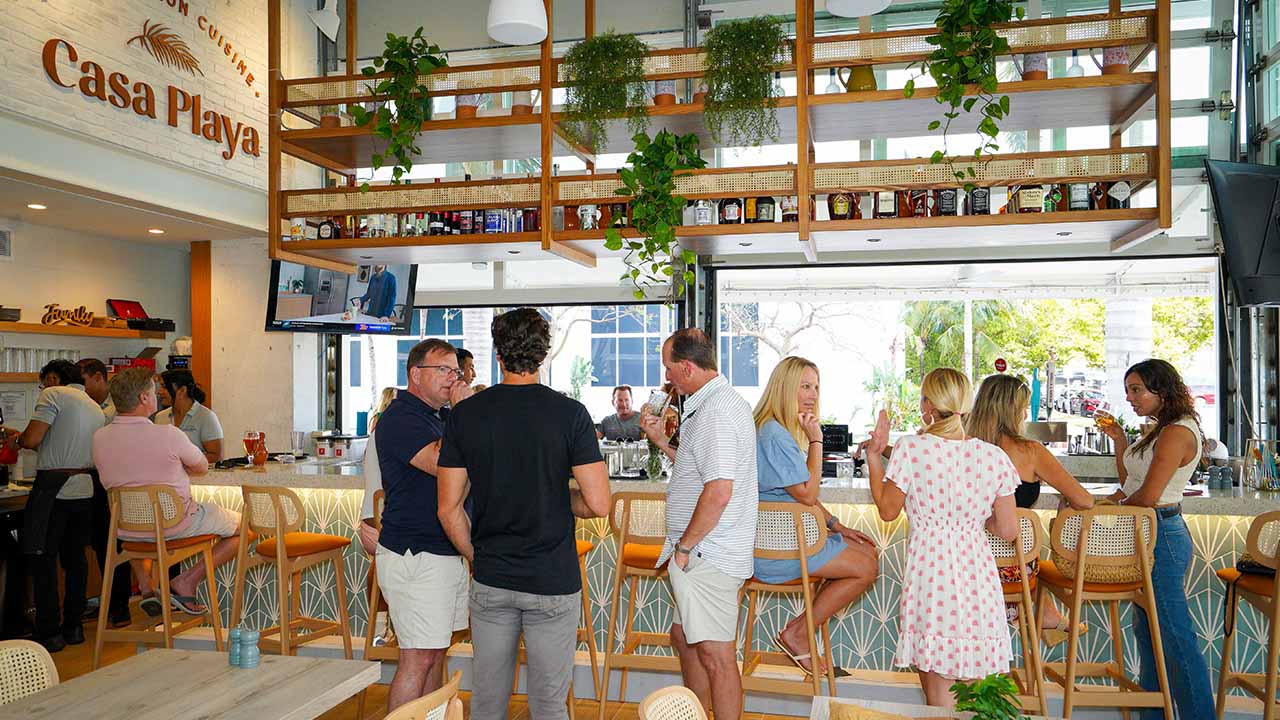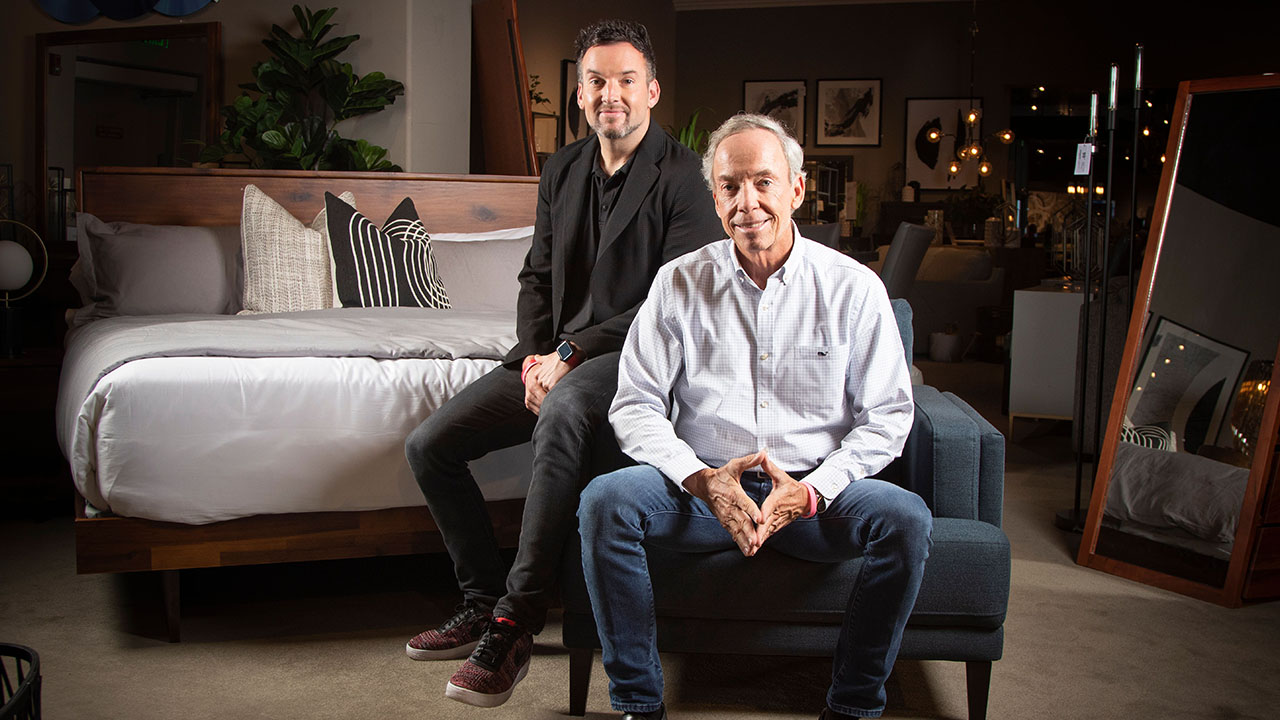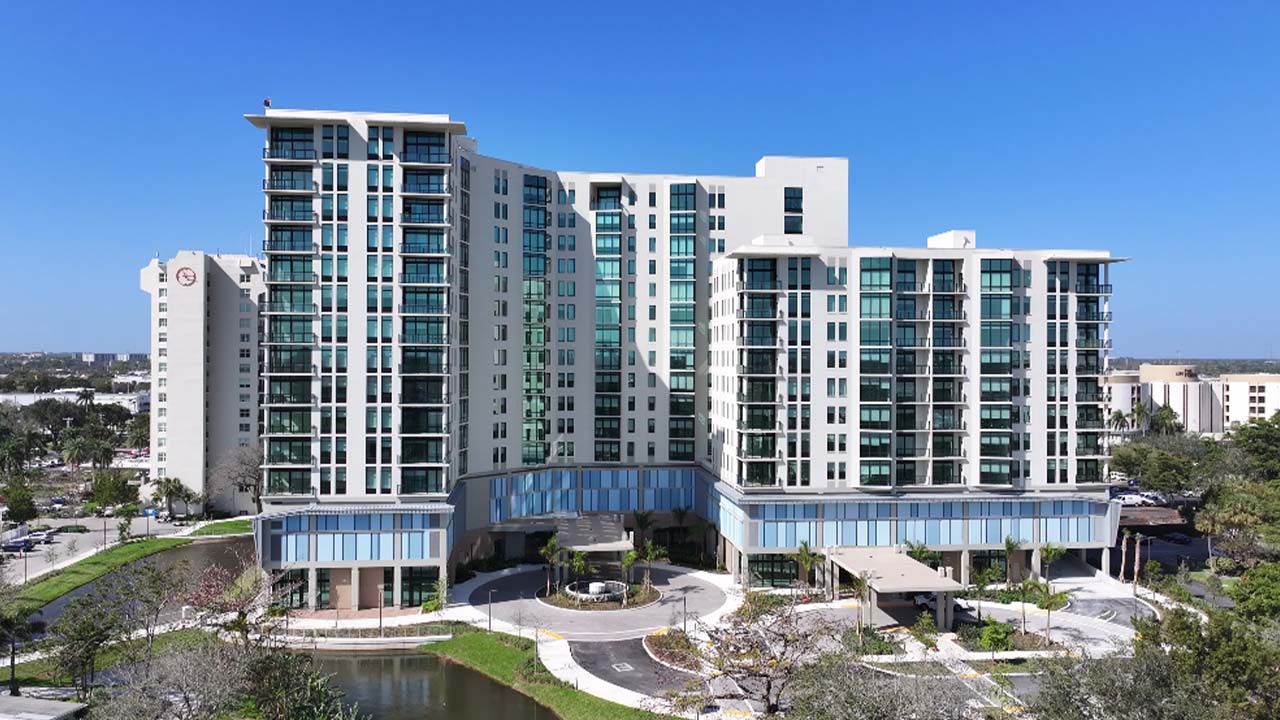The developer brothers Wayne Hollo and Jerome Hollo, sons of the legendary real estate figure Tibor Hollo, are educated, seasoned and they possess rare expertise. They also don’t mince words; they exude the aura of getting things done. Wayne, who is older, serves as executive vice president of Florida East Coast Realty, while Jerome—Wayne calls him Jerry—is also an executive vice president, as well as chief operating officer and chief legal officer, the last remit by virtue of his law degree; his tenure with the firm of Rosenthal, Rosenthal, and Rasco; and his election to the board of directors of the Miami-Dade County Bar Association (where he served for three years).
As for the 95-year-old Tibor, the Budapest-born Holocaust survivor who founded his company more than 60 years ago, serves as FECR’s chairman and president. The youngest generation is represented by Wayne’s accomplished son Austin, who joined the company in 2009 and serves as senior vice president.
To hear Wayne and Jerome tell it, it was Tibor who grasped the future of Miami as a place of vertical living and working when others did not. He was the visionary; everything FECR has done derives from Tibor’s imagination and moxie, from his ability to look toward the sky and see what Miami could be.
PATRIARCHAL PRESCIENCE
“It was probably the early ’70s when I was a very young child and I remember going to a public hearing in the city about the Omni complex, and it was a very controversial hearing,” says Wayne of Tibor’s early mixed-use project. “There were many people supporting us and many people not supporting us for that development. And it dawned on me that it’s not an easy job, that there are people who are going to oppose you, and you have to find your way through that—that’s part of a new development, a new concept, a new vision.” How was Tibor able to persuade the naysayers and win the day? “With his charm, his intelligence and with facts,” Wayne says.
“Let’s not kid ourselves,” Jerome says. “It’s hard work and it’s perseverance. Development can be very polarizing. To my father’s credit, he has been ahead of the curve in urbanism in South Florida. He’s always spoken of the efficiency—especially when you don’t have a lot of land—of urban development. Vertical developments take fewer resources to build and run than a horizontal development”—the latter requiring “more roads to service single-family homes, many more miles of sewer and water systems and electric systems.”
“Take Panorama,” Jerome continues, unsurprisingly, since the 85-story mixed-use tower—the tallest residential building south of Manhattan, completed in 2018—has become FECR’s touchstone. “Eight hundred and twenty-one single-family homes in a development would look much different than the vertical project.”
Jerome also shares a memory of his father’s farsightedness. “When I was very young, my father met with the city leaders at that time and he said, ‘Guys, we need a tunnel under Brickell.’ Back then, it would cost them a few million dollars, not to say that wasn’t a lot back then, but it certainly wouldn’t have cost what it would cost now. Those are the type of ideas that I recognized my father had. Otherwise, you can just take a look at the developments he’s done: There’s the Grand [the 3.4 million-square-foot mixed-use project, now known as the Venetia, on Biscayne Bay] that still hasn’t been replicated to this day.” It is comprised of 810 luxury condominiums, 80,000 square feet of commercial space, a variety of dining locations, and a full athletic club and spa. Additionally, this 42-story project contains 212 luxurious hotel suites, which presently operate as a DoubleTree hotel. “Then there’s the Panorama, and now onto our new project, One Bayfront Plaza. Love him or don’t love him, he’s certainly a visionary.”
One Bayfront Plaza, expectedly, is top of mind, destined to one day represent FECR the way that Panorama does now. Currently, the company’s headquarters are located in the19-story office and retail complex at 100 S. Biscayne Blvd., but in time, that address will mark the new One Bayfront Plaza, slated to rise as the tallest building in the state: a 1,049-foot-tall supertower to define the city like the Chrysler does in New York and the Willis Tower does in Chicago. Tibor is determined to make it his premier legacy on the Miami skyline.
ACROSS GENERATIONS
Until then, the family business hums along, courtesy of a tiny core of deciders with a shared bloodline that creates the state’s highest buildings. “I love working with them,” Wayne says of his family. “I love seeing my dad when he comes in every morning. I love seeing Jerome. I love seeing my son. It’s a wonderful experience to work with your family.”
The division of labor is bound up in mutual respect: “Jerry’s strengths are innumerable,” Wayne says of his brother. “He’s very, very smart, he’s an excellent negotiator. He handles all our contracts; he’s our corporate counsel. I wish I had gone to law school so I could understand them. He’s our dealmaker. We each have our own responsibilities within the corporation, but there’s an overlap between Jerry and me. We may work on the same deal, but on different facets of the deal.”
Jerome adds: “The nice part is, between Wayne and I, we cover about 18 hours of the workday. “Wayne gets in around 5 in the morning, and I leave in the evening, so we cover the whole thing.”
“We’re shift workers, absolutely,” Wayne jokes. And what does he do from before the sun comes up? “I translate for Jerry and my father.”
There’s far more to it than that, as Jerome explains: “Wayne’s specialty is coming in and handling the financial aspects of the company and dealing with our lenders. It’s his strength. There’s a certain mindset to deal with banks and lenders on a daily basis, but he’s able to it.”
Tibor joins his sons in office two or three days a week. “I think Wayne and I have sort of loosened up his workload and given him the ability to do what he’s always been passionate about, and that was designing the structures and seeing how they worked,” Jerome says. “He doesn’t really do much of the day-to-day work, but it allows him to do what he loves to do now, and that’s a wonderful thing. We’re looking at a couple of re-adaptive uses on certain spaces we have now, and he’s out there designing them—what they should look like, how they should function.”
Wayne describes how Austin has stepped up—and that his son’s trajectory seemed predestined. “Austin was about 8 years old when he told me he was going to be a developer,” Wayne recalls. “He never wanted to do anything else. He’s very bright, did very well in school, he was offered five or six full scholarships—of course picked the one university that didn’t offer him a scholarship—but that was OK.” Austin graduated from Washington University in St. Louis with business degrees in marketing and finance and was ready and willing to work for FECR. But first he cut his teeth as an analyst in the real estate finance and servicing group at LNR Partners in Miami Beach, working on the acquisition, surveillance, servicing and disposition of commercial mortgage-backed securities.
“So, by the time he came here, he was, if not well-seasoned, then salt and pepper,” Wayne says. “He has grown in the last 12 years to now basically running our properties on a day-to-day basis, with our major decisions being made by Jerry. [Tibor] doesn’t have to mess with the daily grind of the residential properties, things of that nature. Austin’s taking care of that. So, my father is free to do more of what he likes to do, and some of that is spending time with Mom, which he’s doing more of.”
KNOWING THE MARKET
As the Hollos see it, Miami’s hot market isn’t just a matter of the city becoming a more-turbocharged sixth borough of New York. They are seeing, in this exodus from the northeast and other places, a sense of commitment, people exchanging their lives. “I just finished looking at financial spreadsheets,” Wayne says, “and we have a better than 75% renewal rate [at Panorama], and this is after a series of rent increases. People are not leaving.” He adds that although Panorama is just a few years old, so apples-to-apples comparisons aren’t available, in the company’s other luxury buildings, “renewal rates were in the 50s. That’s a substantial increase in renewal rates and retention.” Wayne says that of current lessees, “15% are from New York, 10% from California, about 5% from Texas and 4 to 5% from New Jersey. I’m sure I’m leaving out some states, but those are the majors.”
According to Jerome, “There’s no question that a tremendous amount of people, who could afford to do so, have moved to South Florida—not just to Miami, though Miami’s getting a large portion of it. South Florida is benefiting as a whole. They’re pretty much here to stay, especially when they live here through that first winter. My daughter is working in Manhattan and says, ‘I can’t wait to come home.’ The [transplants] are bringing vibrancy into the area, they’re bringing their own brand and what they like. You can see a lot of the restaurants from the New York area have opened up down here and are still opening up. Certainly, where we are in the Brickell neighborhood is getting a large influx of those people, and Brickell Avenue offers a little piece of Manhattan that you can’t really find anywhere else in South Florida.”
“I’ve had conversations with several tenants at Panorama who came from New York and the Northeast, and they look at me and say they’re never going back to New York,” Wayne says. “They’re telling their friends and families and there is an exodus, for a myriad of reasons—taxes, weather, crime.”
And it’s not just on the residential side, Jerome says: “Our mix of commercial tenants is changing. In the last year, especially in the Brickell area, we’ve had a lot of new entities moving in, and relocating large portions of their offices—financial institutions—and I think that bodes well, because that’s going to push up our average wages in the area.”
A HIGH BAR
The brothers are well aware that a more sophisticated consumer brings higher expectations, and residential towers—whenever for homeowners or tenants—must keep raising the amenities bar. At Panorama, Jerome enumerates the ways in which that bar is high: “We have over 100,000 square feet of amenities, including a 50,000-square-foot fitness center, state-of-the-art, bigger than many private gyms; we have three private movie theaters, and we had parties going on during Superbowl; we have two game rooms—a virtual reality sports room and game room with a billiards table and physical games. We also have a private wine and private dining room that people can book for parties, a social café for people to hang out in and bring their computers, a business center, a Pilates and yoga Studio, a children’s play room, a main pool, a serenity pool, and a children’s splash pool with interactive water features.”
Wayne adds the Panorama—as well as their other projects—are each so singular and have so many amenities that, “One of the problems I have in financing the properties is there are no comparable properties, so when they do their appraisals, I need to make sure that they can [understand], so our loans can reflect the value of the properties.”
Meanwhile, interest in the sui generis tower has not yet peaked: “We get calls all the time about Panorama, because it is such a unique project,” Jerome says. “We talk to other lenders, other developers—and there is not a project, probably in the country, like Panorama.”
Wayne says that the calls come not only from wealthy individuals, “but from institutions who want to buy Panorama, but it’s not for sale. It’s going to stay a family legacy building. It’s going to stay in the family. But that doesn’t stop five or 10 people a day from trying.”
Photos by Nick Garcia
















